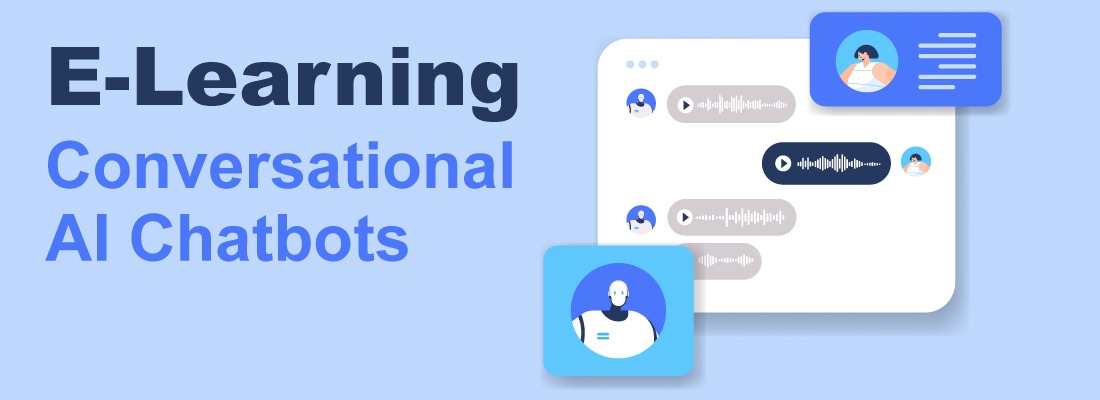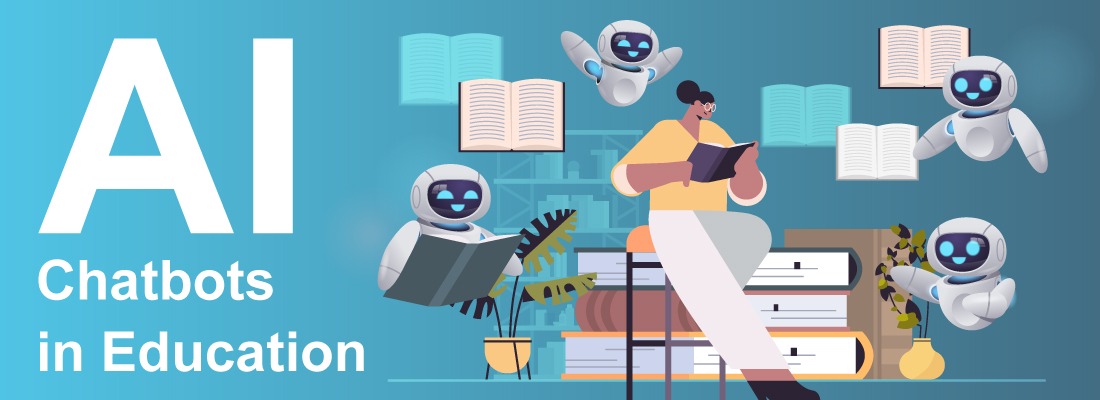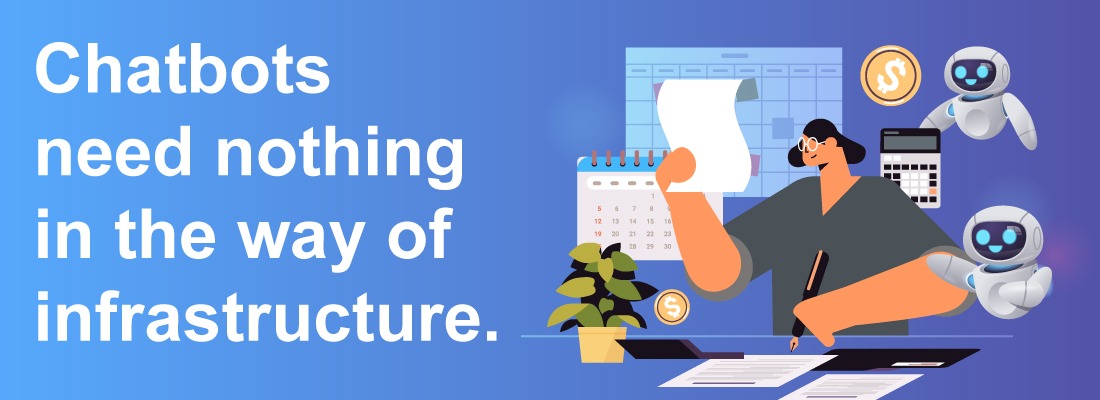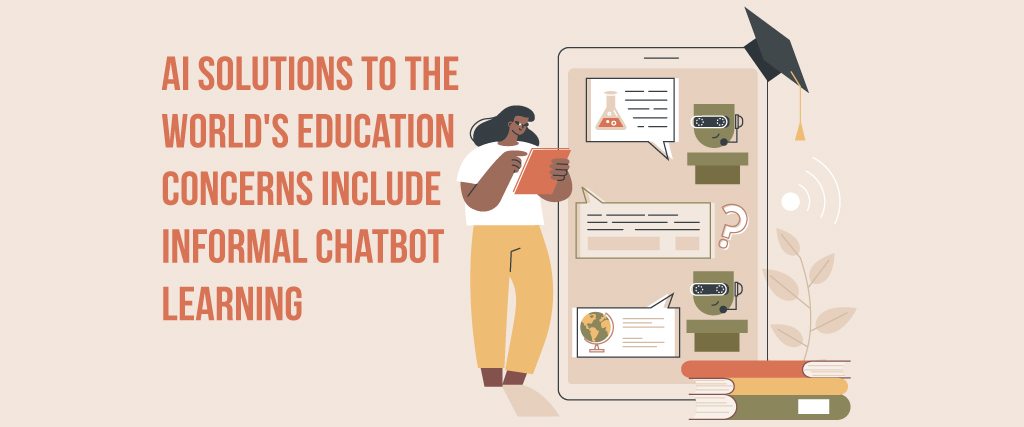Chatbot Learning: By 2050, everyone will be literate! Although it’s a big claim, shouldn’t everyone around the globe be working together to achieve it?
Today, education is a luxury, but what if it could become a fundamental human right with the correct technology and support?
Well, skeptics will always question the audacity of such a big claim.
However, if the COVID-19 epidemic and how international educational institutions have switched to online mode.
AI applications and chatbot-based education are taken into account, likely, the assertion is not wholly false.
A practical and cost-effective answer to public education problems has often been seen in EdTech AI technologies, particularly instructional chatbots.
With AI-based chatbots, education could simply undergo a somersault due to minimal infrastructure, time, and cost dependence.
Worldwide, particularly in the business sector, AR/VR solutions for training and education are already being investigated, and soon, AI educational chatbots will become commonplace.
Children nowadays are intelligent, and they need competent answers.
And if anybody has any concerns, the most recent decline in Alibaba’s DingTalk’s AppStore rating, a homework-based application, is evidence of that.
Teachers streamed courses, graded assignments, and other tasks using DingTalk in more than 300 Chinese cities, including Wuhan, during school closures (to stop the spread of the coronavirus).
Students began giving the app a 1-star rating on the AppStore in protest of the continued lectures, hoping it would take it down shortly.
The fact that the app was left in place despite having a rating that dropped from a remarkable 4.9 to 1.4 shows that using intelligent AI-based technology in education is all about being wiser than the user.
E-Learning Conversational AI Chatbots: An Understanding

Conversational AI, a group of technologies that enable computers to comprehend human language and converse with people, is used by educational chatbots.
The increasing need for creative technologies to streamline activities is to blame for the increased demand for conversational AI.
New-age chatbots and virtual assistants like Apple’s Siri are powered by conversational AI, making a speech the most common format for communication between humans and machines.
Business Insider reports that shortly, 80 percent of corporations will be employing chatbots at work.
Additionally, the prognosis is not only applicable to the business sector.
The current epidemic and global slowdown are allowing EdTech firms to review outdated models and reinterpret them using AI technologies to create a more individualized and efficient form of education.
Chatbot Learning – Why are AI chatbots in education necessary?

More than simply a fun thing to do, embracing new technology is essential for survival.
Digital change is pervasive, and it won’t be long before it is forgotten if it doesn’t have the proper technological support.
There is no question that corporate applications of NLP, Deep Learning, and Machine Learning will lead to the twinned chatbots and edtech of the future.
To cater to the demands of the younger audience, Edtech businesses are introducing chatbot solutions as consumers switch from one-use websites to social networks.
It not only helps them satisfy the needs of their audience, but it also makes learning more effective, helps students become better learners, and makes teaching easier.
Why choose chatbot-based learning?
The benefits of chatbots in education are
Chatbots may assist firms in growing:

The major problem with e-learning platforms is that they haven’t been able to assist organizations in growing as much as they would have liked.
E-learning platforms are unattractive to consumers since they call for personal computers, feature lengthy movies, and extended forms of material.
However, these difficulties are readily addressed with the advent of bot-based learning.
Smartphones are the perfect platform for chatbots, which provide a tailored learning environment by analyzing student replies to determine if they have understood a topic or not.
With 3.5 billion smartphone users, chatbots are a more approachable tool than e-learning systems.
Utter, an Indian chatbot-based learning platform is an excellent example.
The website offers on-demand skill acquisition to assist blue-collar employees in India.
Within six months of coming online, it has already attracted 100,000 retail (B2C) learners and 500,000 institutional (B2B) learners.
Chatbots may improve learning efficiency:
Learning can be improved with the help of chatbots.
The learning environment has fundamentally changed due to chatbots’ entry into the education sector.
Chatbots may turn a whole lecture into a dialogue using Natural Language Processing, making it more exciting and attractive to students.
The student may be tested by the bots on the subject, and the result can be sent to the instructor to see how the student is doing.
The bot may offer the following lesson to the learner if it determines that they have a good understanding of the current lesson.
The utilization of technology is crucial to the success of bot-based learning.
Top AI development businesses are tenaciously searching for clever solutions, particularly at this time when online and app-based learning is the replacement for traditional classroom systems.
An AI chatbot like Botsify, for instance, operates similarly.
It tests pupils by presenting them with images, words, and videos related to a particular subject.
The material is tested once the pupils have learned it.
The instructor may then evaluate the student’s performance based on the findings.
Chatbots need nothing in the way of infrastructure:

This benefit is probably the main factor in our ability to envision a day where everyone is fully literate.
Creating an e-learning platform is one-tenth of the price of chatbots built for educational institutions.
Chatbots are fast, inexpensive, and simple to make.
Chatbots can assist the learning module without needing a complex, costly infrastructure.
We could readily see how AI is used in daily life if we had a chat-based learning platform.
Students may access their course materials from anywhere on the globe with just a smartphone.
In addition to providing educational resources, the platform enables students to communicate with one another, keep track of deadlines for assignments, and learn about important news and events.
Chatbot learning may benefit instructors and students by:
The whole educational system may benefit from chatbots.
The capacity of chatbots to assist instructors and kids is an additional fantastic feature.
Using AI in chatbots and the classroom may be very beneficial.
Teachers may automate several tedious chores, such as responding to student inquiries concerning deadlines, course modules, and assignment due dates.
Chatbots may assist in tracking students’ progress and responding to queries like these.
By responding to frequent inquiries from potential students concerning scholarships, admission criteria, and fees.
Chatbots may reduce the workload of the administrative staff and enable applicants to get an answer more quickly.
In these circumstances, RPA solutions are often combined with AI services to provide the optimum experience.
For students, AI and chatbots have the power to alter the educational setting fundamentally.
Students will participate in better learning experiences and be better prepared to cope with the abilities necessary in the future with the hands-on expertise afforded by AR and chatbots.
Chatbots may provide students with individualized comments to improve their learning experiences, respond to inquiries about the admissions process and scholarships, and even offer student assistance when necessary.
Students may feel at ease by being guided by an online chatbot about the courses, modules, faculties, and other resources accessible to them.
FAQs lists
1. Is a chatbot powered by artificial intelligence or machine learning?
The future of chatbots, an emerging technology, is moving toward artificial intelligence.
2. Are chatbots a new technology?
The use of chatbots to carry on the discussion is growing.
Conclusion
With the advent of chatbots, big data in the education sector will transform.
In these trying times, chatbot adoption has allowed kids to study from the comfort of their homes, filling a void that absent instructors would otherwise leave.
Everyone involved in the education community, including students, teachers, and potential students, may gain from chatbots.
It won’t be long until chatbots are widely accepted in the educational system due to better learning experiences, better communication, and more efficient learning.
Technology utilization might restore the enjoyment of studying by providing pupils with the possibilities they need.
Read More: Educational Chatbots: 5 Use Cases in 2022







